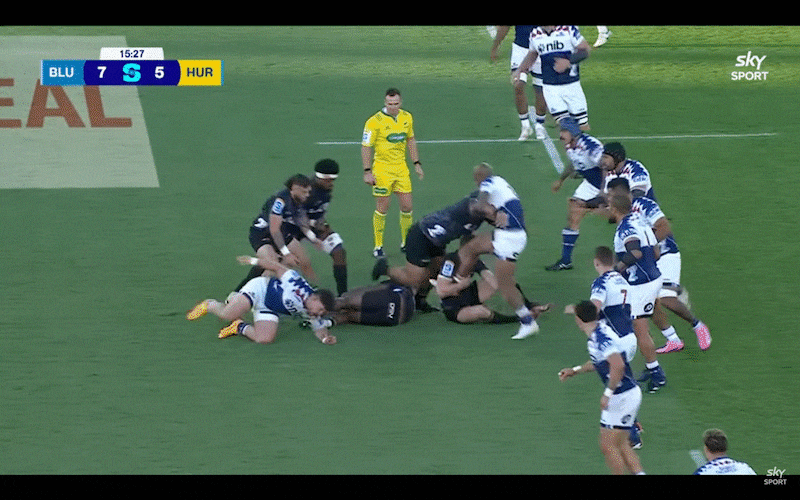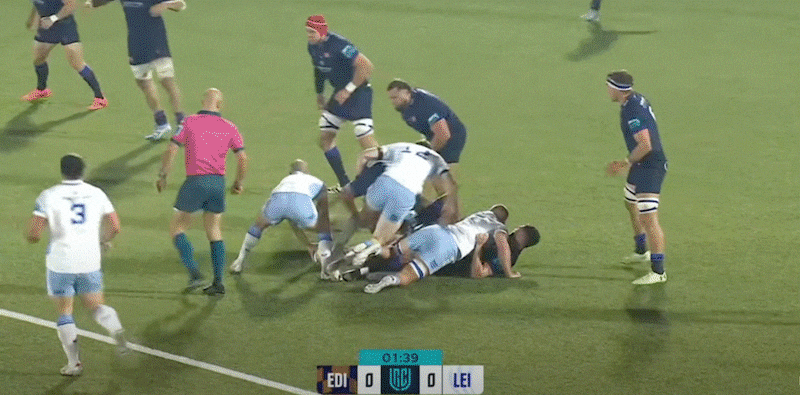Press releases announcing new coaching hires don’t usually offer much of note beyond the name in the headline. However, when Leinster announced Tyler Bleyendaal as Andrew Goodman’s replacement in the role of attack coach, this was a rare occasion when scrolling through normally anodyne quotes revealed a kernel of interest.
“Tyler has been with the Hurricanes for the last few seasons and has been steadily growing as a coach,” said head coach Leo Cullen. “You can see that in the way they’re playing now, not just their results but specifically in terms of some of the stats around their attack.”
Stats interest plenty of people, but are generally never mentioned in press releases. Sadly, the information treasure trove ended there. No further detail was offered.
Looking through various data sets, though, does allow for some analysis of the impressive features of the Hurricanes attack during Bleyendaal’s tenure. Do any of these metrics match up to potential holes in Leinster’s armoury?
READ MORE
Jayson Ross is the lead performance analyst for the Hurricanes. As their numbers and video guy, he worked extensively with Bleyendaal.
“I don’t know if, when they [Leinster] were doing their recruitment they have their own measures which are important to their own game in-house, or, just the generic stuff,” he explains.
Leinster’s advanced internal metrics won’t be released any time soon. The generic numbers, which can be found in a matter of seconds by anyone with a laptop, nevertheless paint an interesting picture.
“Last year we [Hurricanes] were first for line breaks created,” explains Ross. “We’ve been second for points scored the last couple of years. Our number of 22 entries last year was massive. [We ranked highly] for offloads, tries scored . . . you’re building pressure and playing down the right end of the field.”
Under Bleyendaal, the Hurricanes had no issues creating space. According to Opta, their proportion of carries which broke the gain line (67 per cent) was the second highest in global club rugby. Their dominant carry rate of 41.6 per cent saw the Hurricanes ranked 14th of the 52 main clubs in the world.
Leinster don’t have a broken attack. They ranked in the top six clubs last season for drawing in defenders. Their dominant carry rate of 41.4 per cent was almost identical to the Hurricanes. Their gain line success rate of 59.2 per cent sees them placed 30th, well behind the ‘Canes. That, in part, can be attributed to the quality of defences in different competitions. It is no coincidence that the top five clubs on Opta’s gain line ranking are Super Rugby teams.
Where the two sides do differ is in attacking efficiency. Last season’s Champions Cup final was defined by Leinster’s profligacy. Five line breaks, close to 450 post contact metres (nearly double their opposition’s number) and 18 entries into Toulouse’s 22 yielded just one Josh van der Flier try when chasing the game in extra time.
It goes beyond just one game. Last year, Leinster turned 35.5 per cent of their line breaks into tries, leaving them mid-table as the 26th most efficient club side of the 52 on Opta’s list. The ‘Canes, by contrast, converted 41.6 per cent of their line breaks into tries, good enough for eighth best in the world.
Efficiency is embedded into the Hurricanes’ game. They ranked second for total carries in the recent Super Rugby season. Quality matched the quantity, with the Hurricanes making 4.23 metres made per carry, ahead of the Blues – who made the most total carries – on 3.9.
How did the Kiwi side achieve all this? Personnel and the attacking focus of Super Rugby undoubtedly helped. Bleyendaal’s creativity, though, also played a role. Rival analysts point to unusual patterns in the ‘Canes’ phase play, in particular the use of their forward pods.
In general play, Bleyendaal structured his forwards into two pods of three across the middle of the park, with one big man lurking wide on each flank – a 1-3-3-1 system. A backline player – often called a pivot – sat behind the forwards to take a pass out the back.
Normally, the back then spreads play wide in the original direction of travel. In a passage of play earlier this year against the Blues, though, Bleyendaal had his pivot cut a hard angle against the grain, catching the defence off guard.

“There have been a couple of teams we’ve run that against with success for the last three years,” acknowledges Ross. “There are other little bits and pieces that he [Bleyendaal] ties in with that as well. We tend to play a 1-3-3-1 but how can the two pods of three be more connected and create more variation?”
Was said variation on display on Friday night during Leinster’s win over Edinburgh? It didn’t look overly planned, but outhalf Sam Prendergast at one point found a midfield pod of three forwards with an inside pass. This pod is normally positioned outside the 10, not inside.

A reverse pass from playmaker to forward is not the same as an inside ball from forward to back. Yet it’s on the same family tree of forward pod creativity. The pass didn’t lead to a line break. If it was a Bleyendaal-ism, more time is needed for new plans to bed in.
For all the structured jargon, Bleyendaal buys into the modern trend of asking players to make decisions for themselves.
“We have a basic blueprint but develop a skill set where any of our players can fill any role and react to the pictures in front of them,” explains Ross, the Hurricanes analyst.
“He [Bleyendaal] doesn’t take anything too seriously but takes everything seriously at the same time. He’s pretty calm and collected, a real deep thinker of the game. He’s really good on a lot of little details, sometimes trying stuff out to see if it works, but also having a real purpose for why we do things as well.
“He’s still really young in his coaching career. He’s definitely one of the most exciting and capable attack coaches I’ve worked with.”
Unlike when Leinster brought in Jacques Nienaber to revamp their defence, we’re unlikely to see a system overhaul under Bleyendaal. Leinster are a historically good attacking side, even if their work with the ball let them down in the biggest game of last season. The changes with Bleyendaal are likely to be subtle but, ultimately, the success of his appointment and of Leinster’s season as a whole will be judged by the not so subtle goal of finally winning a European final.
- Sign up for push alerts and have the best news, analysis and comment delivered directly to your phone
- Join The Irish Times on WhatsApp and stay up to date
- Listen to our Inside Politics podcast for the best political chat and analysis
















